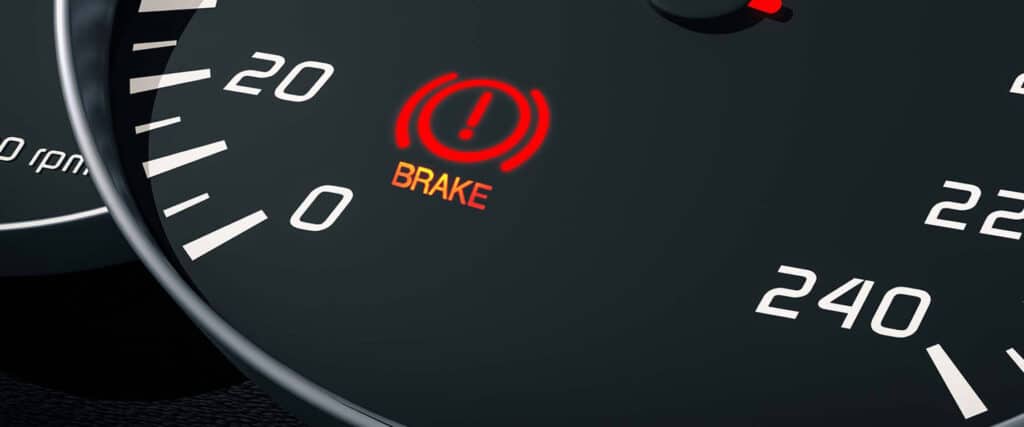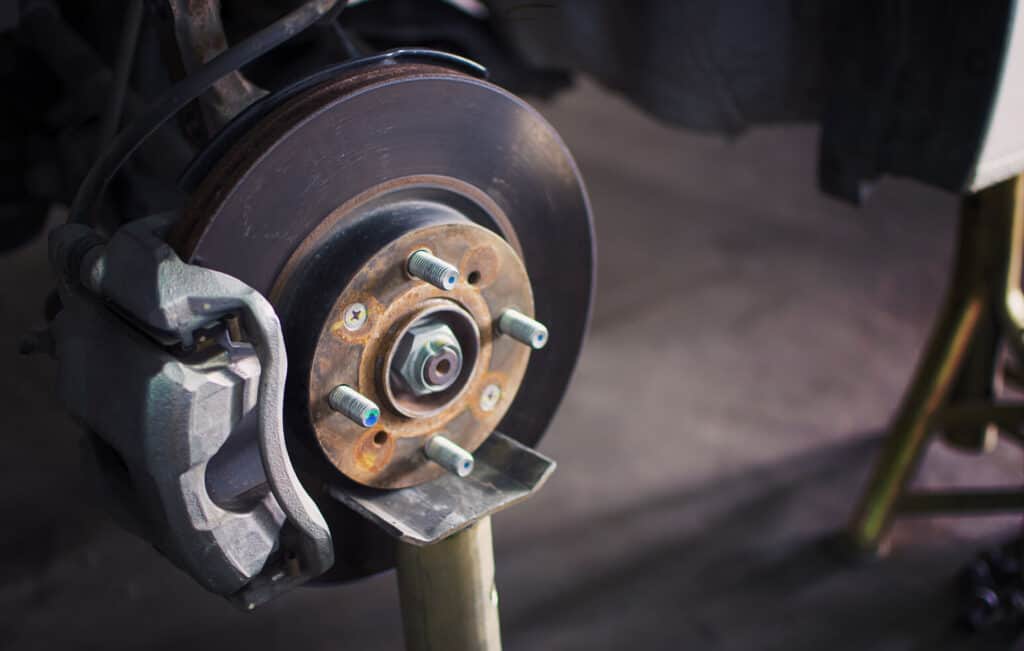Brake Warning Light On Service and Guide: What is it? What to do?
Picture this – you’re comfortably settled in your car, grooving to the catchy rhythm of your favourite tune when, out of the blue, a mysterious symbol interrupts your dashboard’s otherwise familiar landscape. Like the unexpected twist in your preferred Netflix binge, it commands your attention. The symbol looks like an exclamation mark enclosed within a circle or parentheses, and it’s usually red or yellow. This eerie glyph is your car’s brake warning light. But what exactly does this enigmatic icon represent? It’s your car’s way of whispering, “Hey, something’s up with your brakes. You might want to check that out.”
Behind the Glow: What Triggers the Brake Warning Light?
In the theatre of your car’s dashboard, there are various brake warning lights, each donning their masks, enacting an array of dramatic roles. Think of these symbols as the cast members of a gripping drama, each one communicating a critical aspect of your vehicle’s performance.

The primary actors here include
• The Red Brake Warning Light: This luminary bears the symbol of an exclamation mark ensconced within a circle or parentheses, traditionally coloured in an eye-catching red. It’s your car’s dramatic way of signalling that something is amiss with the brake system. It may light up when your parking brake is engaged, the brake fluid is low, or if there’s a serious malfunction in the hydraulic system.
• The Yellow or Orange Brake Warning Light: If the red light is the lead actor, consider this the supporting actor with equal importance. This light is often represented by the letters “ABS” inside a circle, indicating an issue with the Anti-lock Braking System. The ABS light doesn’t necessarily mean a problem with the actual brake parts but rather the system that works in tandem with them, ensuring you have control and stability while braking.
Each symbol or light on your dashboard represents a unique chapter in your car’s ongoing saga. So, if you’re sitting there puzzled, wondering “What does the brake symbol mean on my dashboard?” – we’re here to help you decipher these cryptic glyphs and understand the plot better. Buckle up for the enlightening journey ahead!
Don’t Ignore It: The Risks of Neglecting Your Brake Warning Light
Think of the brake warning light as your car’s version of a dental pain – a minor discomfort at first glance, but ignoring it could potentially invite calamitous consequences. It’s your car’s cry for attention, a sign that something is off with your brake system. Just like you wouldn’t dismiss a nagging toothache or try to treat it with over-the-counter remedies, you shouldn’t brush off your brake warning light either.
Driving with the brake warning light on is akin to skating on a frozen lake in the middle of a sunny day – it’s perilous, unpredictable, and frankly, not a great idea. The risk is real. You’re gambling with your safety, the safety of your passengers, and other road users. What might initially seem like an annoying interruption to your otherwise smooth drive could escalate into a serious brake failure, transforming your vehicle into an uncontrollable menace on the road. So, heed the light, because it’s always better to be safe than sorry.
Diagnosing the Problem: Steps to Take When Your Brake Light Illuminates
When your brake light decides to pop in for a surprise visit, you don’t need to dust off your deerstalker and pipe, channeling your inner Sherlock Holmes. Many issues causing this illuminating interruption can be diagnosed and remedied with relative ease.
First, check if your handbrake is engaged – it’s as simple as ensuring you’ve switched off your television before leaving the house. If the light persists, your brake fluid level could be the culprit. Like checking the milk carton before pouring your morning cereal, ensure your brake fluid is at the optimal level – neither too high nor too low.
For problems that seem like an enigma wrapped in a riddle, professional intervention may be necessary. If you’re scratching your head, wondering, “Why is my brake light on but brakes work fine?” or “What does it mean when the red brake warning light comes on?”, it’s time to call in the experts.
As the adage goes, “A stitch in time saves nine.” Addressing these problems promptly can save you from a costly repair or, worse, a dangerous situation on the road. So, when your brake light decides to make an appearance, remember to stay calm, diagnose the issue, and seek professional help if needed. It’s about knowing when to be your own hero and when to pass the baton to a trusted mechanic.
Common Fixes: Dealing with a Persistent Brake Warning Light
Dealing with a stubborn brake warning light can feel like hosting a houseguest who just won’t pack up and leave – persistent and increasingly bothersome. You’ve checked the handbrake, topped up the brake fluid, but the light still insists on glowing. This persistence could be hinting at a more serious issue, such as a failing brake system.
One common culprit could be worn-out brake pads. Like the worn soles of your favourite pair of sneakers, brake pads experience wear and tear over time, necessitating their replacement. Fortunately, changing brake pads is as straightforward as swapping out those tired sneakers for a shiny new pair.
Another potential problem could be a leak in the brake system. This is a bit like finding a leaky pipe under your kitchen sink – you’ll need to locate the source of the leak and seal it. However, if you don’t fancy playing the mechanic, it’s best to leave this task to the professionals.

Professional Intervention: When to Seek Help from a Mechanic
Navigating the intricacies of your car’s braking system can sometimes feel like trying to solve a Rubik’s cube blindfolded. If your brake light remains illuminated, but your brakes seem to be functioning perfectly, it’s time to use that “Phone-A-Friend” lifeline.
But don’t worry, this is not a sign of defeat. It’s a smart move. Like calling a plumber to fix that pesky leak, it’s about recognising when a problem is beyond your expertise. And in such situations, who better to call than Uchanics? As a trusted mobile mechanic service in Canada, we’re ready to dive under the hood and unravel the mystery behind that persistent brake warning light.
Preventive Measures: How to Avoid Seeing Your Brake Warning Light
Let’s face it – the best problems are the ones that never occur. Just like brushing and flossing daily keeps your dentist’s drill at bay, staying proactive with regular vehicle checks and maintenance is the key to a peaceful drive. This means routinely checking your brake fluid, making sure the brake pads are in good shape, and ensuring the braking system is free from leaks.
Remember, your vehicle isn’t just a hunk of metal, but a complex organism that needs regular care and attention. So, treat it like a prized rose bush – nourish it, tend to it, and it will reward you with bloom after bloom of smooth, worry-free drives.
Conclusion: Keeping a Keen Eye on Your Brake Warning Light
Now, you’re no longer a mere spectator but a knowledgeable player in the game of symbols on your dashboard. So the next time your brake warning light decides to pop in uninvited, you’ll know just what to do!
If your car’s brake warning light is on, don’t delay – call Uchanics today. It’s not just about resolving the issue; it’s about ensuring your peace of mind on the road. Remember, when it comes to safety, there’s no compromise.
